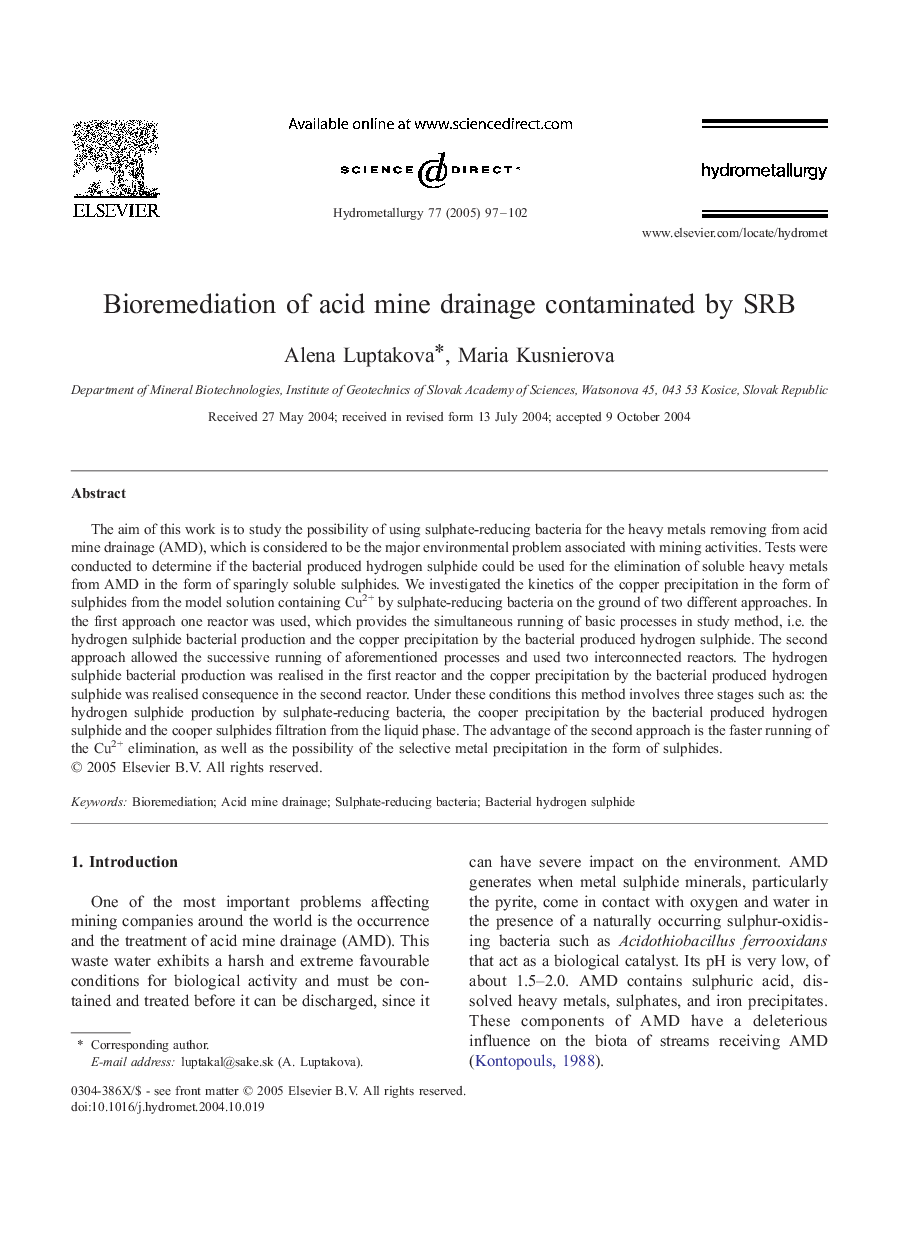| Article ID | Journal | Published Year | Pages | File Type |
|---|---|---|---|---|
| 9632600 | Hydrometallurgy | 2005 | 6 Pages |
Abstract
The aim of this work is to study the possibility of using sulphate-reducing bacteria for the heavy metals removing from acid mine drainage (AMD), which is considered to be the major environmental problem associated with mining activities. Tests were conducted to determine if the bacterial produced hydrogen sulphide could be used for the elimination of soluble heavy metals from AMD in the form of sparingly soluble sulphides. We investigated the kinetics of the copper precipitation in the form of sulphides from the model solution containing Cu2+ by sulphate-reducing bacteria on the ground of two different approaches. In the first approach one reactor was used, which provides the simultaneous running of basic processes in study method, i.e. the hydrogen sulphide bacterial production and the copper precipitation by the bacterial produced hydrogen sulphide. The second approach allowed the successive running of aforementioned processes and used two interconnected reactors. The hydrogen sulphide bacterial production was realised in the first reactor and the copper precipitation by the bacterial produced hydrogen sulphide was realised consequence in the second reactor. Under these conditions this method involves three stages such as: the hydrogen sulphide production by sulphate-reducing bacteria, the cooper precipitation by the bacterial produced hydrogen sulphide and the cooper sulphides filtration from the liquid phase. The advantage of the second approach is the faster running of the Cu2+ elimination, as well as the possibility of the selective metal precipitation in the form of sulphides.
Related Topics
Physical Sciences and Engineering
Chemical Engineering
Chemical Engineering (General)
Authors
Alena Luptakova, Maria Kusnierova,
